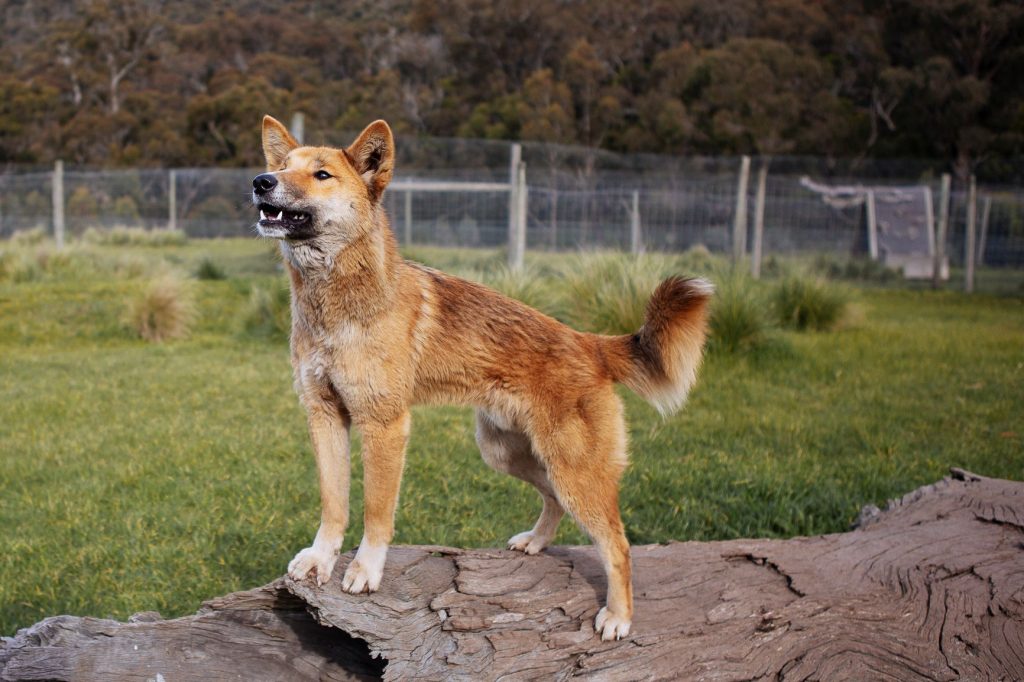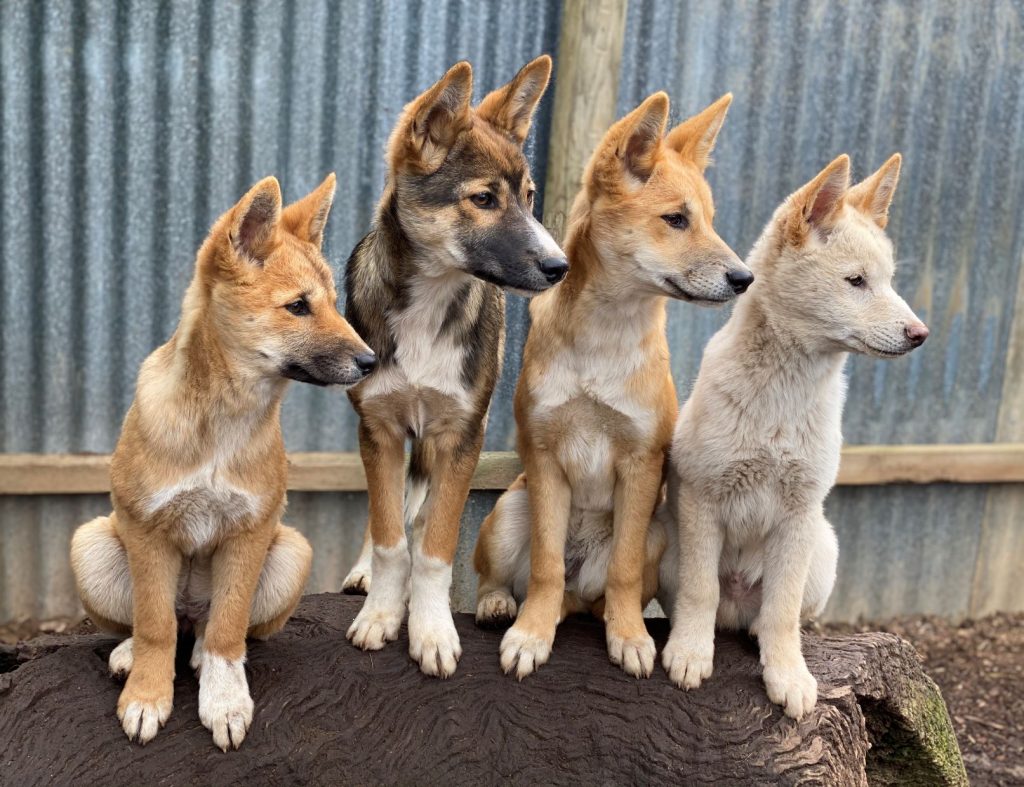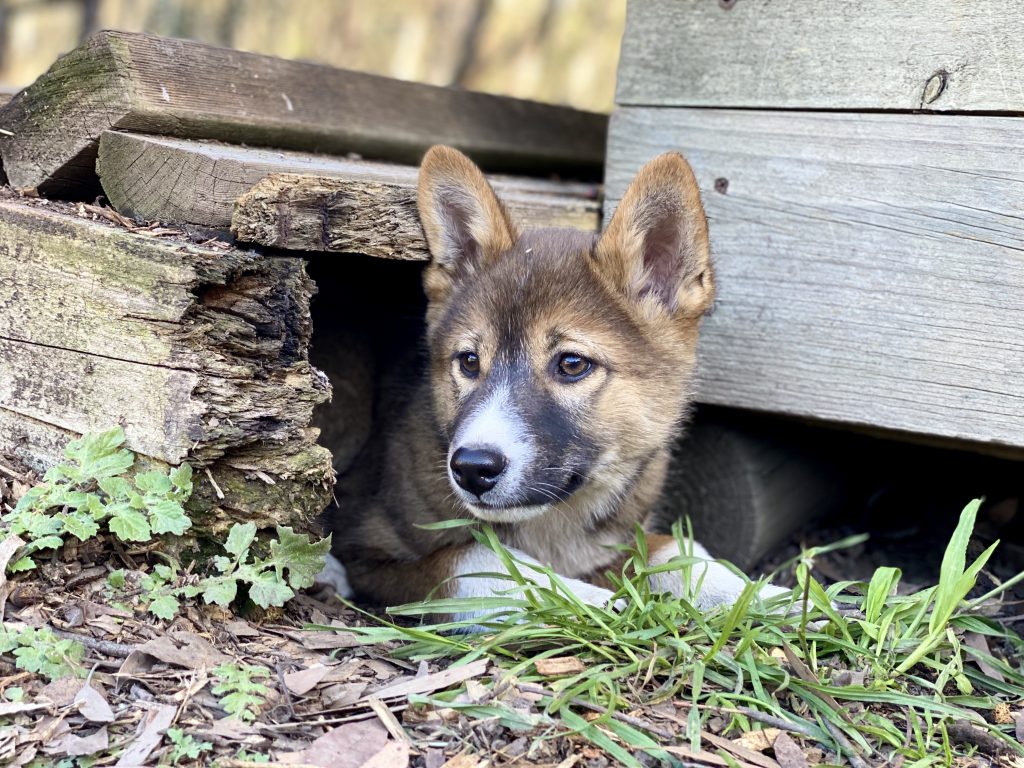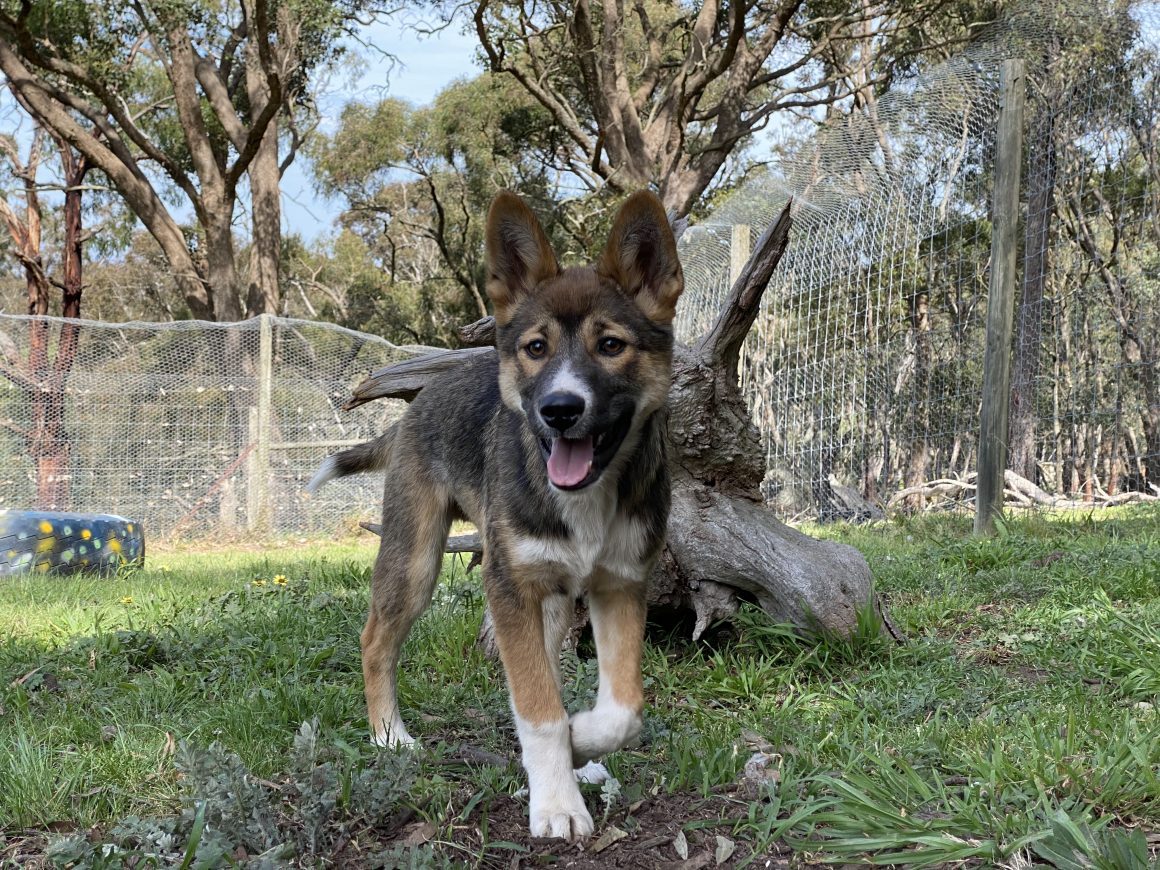In 2018, I booked a Cub tour at the Dingo Discovery Centre in Toolern Vale, Victoria, imagining how lovely it would be to cuddle some cute dingo cubs. But what I discovered that day changed my world. I had never really thought about dingoes before, and I had no idea how amazing, how intelligent and how threatened they are. After the 30-minute information talk before meeting the cubs, I was completely blown away and in total awe of the dingo.
I will never forget that first touch of a dingo two years ago. It was an experience that filled up my whole soul and spirit. I became a volunteer at the centre at the beginning of 2020, and it has been one of the greatest and most fulfilling opportunities of my life so far. I have never been busier, and I have never been happier. I am even writing a middle-grade-fiction book about one of our most famous dingoes, Wandi.
We are pretty sure Wandi was taken by an eagle from the wild when he was five weeks old, somewhere in the Victorian high country. He was then dropped right near a woman’s house in Wandiligong.

The woman heard him crying and had no idea what he was. A dog? A fox? She took little Wandi to the local vet and there she discovered he was an Alpine Dingo. We now know from DNA testing that he is 100% pure Alpine, which proves beyond any doubt that pure Alpine Dingoes are persisting in Victoria. Wandi’s parents are pure, his siblings are pure. There are pure dingoes in Victoria and they need our protection.
We’ve been asked many times why Wandi’s discovery is so important. Throughout the last twenty or so years researchers believed that there were no pure dingoes remaining on the East Coast of Australia. Dingoes are our native apex predator and fossil records show that dingoes were on the Australian mainland at least 3,500 years. More recent DNA studies point to their divergence from other lineages around 8,000 or more years ago. When dogs arrived on the mainland with European settlers, the dingo, much like the Thylacine, was seen as a threat to agricultural industries and so ‘wild dog’ programs were put in place to control them.
These ‘wild dog’ programs are ongoing in various forms today. Unfortunately, a lot of the time these programs do not distinguish between dingoes, dingo hybrids or feral dogs, though studies over the last five to ten years have shown that feralised dogs, that is, domestic dogs that have turned wild, are quite rare. And so, Wandi’s discovery is more than a cute story; it is a story of hope for pure dingoes in Victoria as they are still persisting despite 250 years of persecution.

Wandi has just turned one and he has over 50k followers on Instagram. He is loved all over the world and he has been this major light of hope at the Dingo Discovery Centre. He is helping to educate the public about the importance of dingoes and how right now, his fellow wild dingoes are being shot, trapped and poisoned in parts of Victoria.
So what are the chances of another wild dingo cub coming into our lives at the Dingo Centre? Pretty slim. But just one year after Wandi fell from the sky, a young orphaned cub was found by a farmer in Jamieson, Victoria. After DNA testing him, he is also 100% pure Alpine Dingo. What is even more extraordinary about this little cub is his dark, sable colouring. Very rare and striking. As a result, we have named him Sooty, and now he too is winning hearts all over the world and getting plenty of media attention.

Daily life at the sanctuary continues. Our 40 adult dingoes (Tropical, Desert and Alpine) need their routine of breakfast at the same time every day (Taste of the Wild – plus chicken), a chance to run and play in one of our paddocks, their pens cleaned, their water buckets refilled, and then they need peace and quiet to rest and feel safe in their pens (which simulate dens). This happens 7 days a week, 365 days a year.
In a perfect world, there would be no need for any dingo to be kept in captivity. In the absence of a perfect world, it is important to do what is possible. At the Dingo Discovery Centre, we live in hope that one day all dingoes will be safe and free to live in the wild. Until then, we carry on the fight. Hopefully, we can have people visit us again soon to learn more about dingoes and become ambassadors for this incredible species – Canis Dingo.
Thanks to Kevin Newman (Sanctuary Supervisor) for his help with this article. Please go to our website to find out more about us, our tours, our mission and all of the dingoes at the sanctuary: https://dingofoundation.org/
You can follow Wandi and Sooty on Instagram: @wandi_dingo and @sooty_dingo
The Wandi book for middle-grade readers will be published in 2021 by Hachette Australia.
All photos courtesy of Elliot Fraser, @dingo.photography – with the exception of the photo of Wandi, by Shari Trimble.


Leave a Reply